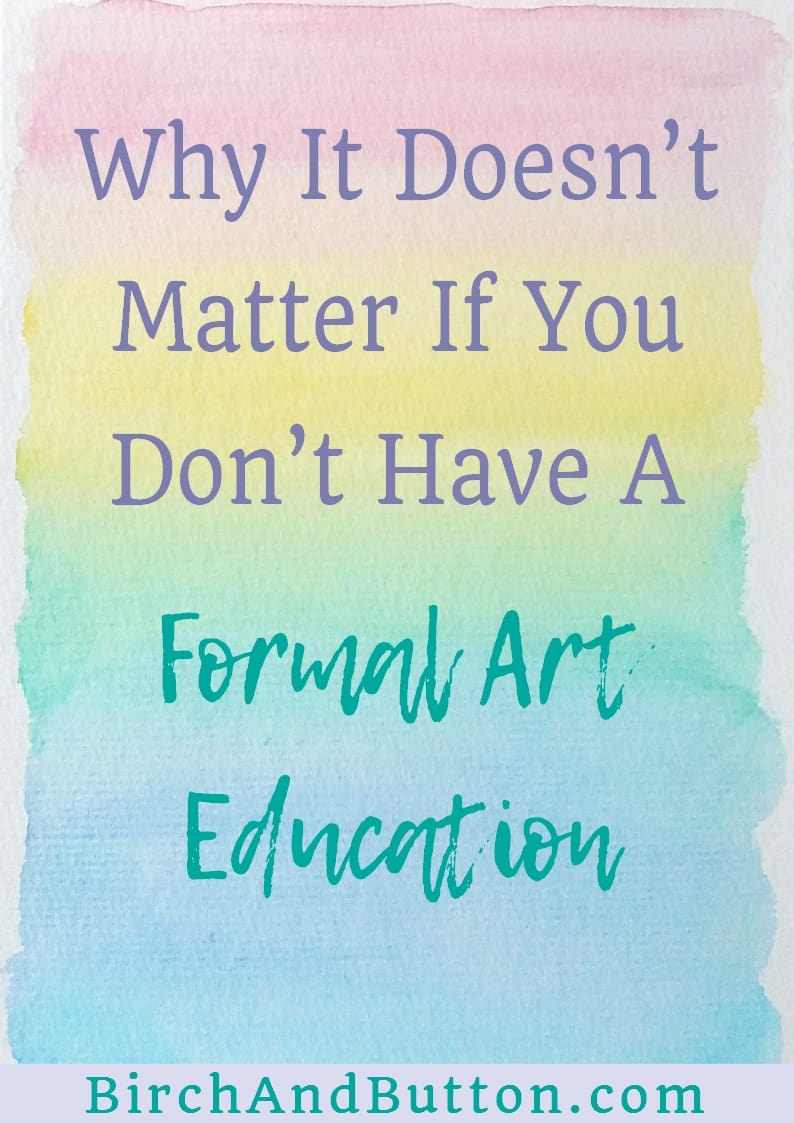If you’ve ever felt like your art is no good because you don’t have an art qualification, this article is for you. Read on to find out why I believe it doesn’t matter if you don’t have a formal art education.
This could be something of a divisive topic and I think there will be people popping up on both sides of the argument. This is really just my personal opinion, so I’d be interested to hear what others have to say on the matter! If you have an opinion, leave a comment below and let’s start a discussion 🙂
Learn the rules before you break them?
I suppose that in the past it was more important to have a formal grounding in artistic theory and techniques, before access to the internet was so widespread. It pays to know what colours go together — that, for example, if you mix yellow and purple you’ll end up with grey, and if you want a lighter red, you should add a little yellow rather than white.
The saying goes that you should know the rules before you break them, and with colour theory in particular I feel like this is probably true. There’s nothing worse than having something go wrong but not understanding why. Like when you know blue and yellow mix together to make green, but you didn’t realise that certain blues lean more towards a red tone and will give you a weird grey-green when you were hoping for a bright green. (That may or may not have happened to me in the past… 😀 )
But whether you learn all that by going to college or university, reading books, asking an artist friend 100 questions, watching videos online, or taking some other course, it’s up to you. The university of YouTube has served me well for lots of subjects!
Ah, the internet…
The important thing to remember is that these days we have access to so much more information than people did in years gone by. The internet has made the world feel smaller, but also allows anyone to publish pretty much anything. And this is obviously both a good thing and a bad thing, as we all know there’s a lot of rubbish and unreliable information online. But if you sift through the rubbish and find the gems of information, you can learn so much.
And don’t forget books!
Don’t forget about books! And libraries! Oh, I love me a library, and I really hope you have a local one. My library (ha, “my” library…) has SO many art books, and I’ve learnt a ridiculous amount from them. But even if you check a book out and it turns out that you don’t like the writing style, or don’t feel that the information inside is that valuable, you can just return it — with no money wasted.
Learn from your mistakes
You also shouldn’t underestimate the value of learning from your mistakes. As long as you can find out why something didn’t work out right (like the weird grey-green incident I mentioned earlier) you should feel free to get stuck in and see what happens. This works well unless you’re the kind of person who is a perfectionist, or finds it overwhelming to just dive into a topic that you don’t know much about.
You could always start off by mixing colours together. If you have a couple of different blues and a couple of different yellows, you could mix them up and see what yellows you get. Label how you made the weird grey-green in case you ever need to make it in future. Make a few pages in your sketchbook dedicated to colour mixing. You’ll learn loads that way, and it will probably stick in your mind better than if you’d just read about it in a book.
Create what you love
I think that, in general, if you’re creating stuff that you love and that lights you up, that is all that matters. Whether you’re doing it as a hobby or professionally, I think you should do what you love, and I don’t believe you need a formal education in art to do that.
Whether you choose to share your artwork or not is completely up to you, but know that there are bound to be other people on this wonderful, diverse planet that resonate with what you create.

